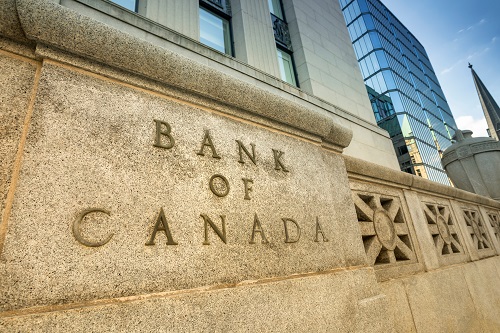The USD/CAD exchange rate has risen for five consecutive days as investors focus on the upcoming Bank of Canada (BoC) decision and US Personal Consumption Expenditure (PCE) data. It rose to 1.3765 on Tuesday, its highest point since June 14th.
Bank of Canada rate decision
The Bank of Canada will be in the spotlight on Wednesday as it delivers its interest rate decision on Wednesday.
Analysts expect that the bank will continue cutting interest rates in a bid to stimulate growth and lessen the burden of Canadians.
If this happens, the BoC will slash interest rates from 4.75% to 4.5% and then point to a few more cuts later this year. In a recent statement, analysts at ING Bank said:
“With inflation now comfortably within its 1-3% target range and rising labour supply and weaker hiring pushing the unemployment rate up by 1.6 percentage points from its July 2022 lows, there is growing evidence that excess supply is forming in the economy.”
The analysts expect the bank to cut rates by another 50 basis points later this year. Like in the US, the BoC is mostly concerned about the country’s unemployment rate, which has risen gradually in the past few weeks.
At the same time, Canada’s inflation has moved in the right direction in the past few weeks. The most recent data showed that the headline Consumer Price Index (CPI) dropped to 2.7% in June from 2.7% in May. Inflation peaked at 8.1% in 2022.
The USD/CAD pair has also risen because of the performance of the crude oil prices. Recent data shows that the price of West Texas Intermediate (WTI) retreated to $78, from this month’s high of $84.50. Brent, the global benchmark, has also dropped to $82 from this month’s high of $88.
The Canadian dollar reacts to crude oil because the country is the fourth-biggest exporter in the world after Saudi Arabia, the United States, and Russia.
Personal Consumption Expenditure data ahead
The other important USD/CAD news will be the upcoming US GDP and Personal Consumption Expenditure (PCE) data set for Thursday and Friday.
Economists expect the data to show that the economy expanded by 1.9% in the second quarter after growing by 1.4% in Q1. The US will also publish the latest durable goods orders, an important leading indicator.
While these numbers are important, their impact on the US dollar will be limited. Instead, traders will focus on the upcoming PCE report. PCE is a crucial inflation measure that looks at price changes in rural and urban areas. As a result, the Fed prefers it to the Consumer Price Index (CPI) data that looks at urban prices.
Economists expect the report to show that the headline PCE softened from 2.6% to 2.4% in July while the core CPI slowed from 2.6% to 2.5%. On a MoM basis, the number two numbers are expected to come in at 0.2% and 0.1%.
A bigger drop than expected will be a positive thing for the market as it will increase the odds of a future rate cut. Earlier this month, data showed that the CPI dropped to 3.0% in July.
The US will also publish the latest personal income and spending data. The expectation is that income dropped from 0.5% to 0.4% in July while personal spending rose to 0.3%.
These numbers will come a few days before the Federal Reserve meets for its July interest rate decision. In this meeting, analysts expect that the bank will leave rates unchanged between 5.25% and 5.50%.
The Fed will provide more hints that it plans to cut rates as soon as in its September meeting. These hints will continue at the Jackson Hole Symposium in August, which will happen after it receives next week’s jobs numbers and the July inflation report.
USD/CAD technical analysis
USD/CAD chart by TradingView
The daily chart shows that the USD to CAD exchange rate has been in a strong uptrend in the past few days. It has jumped for five straight days and is hovering at its highest point since June 14th.
The current rally happened after the pair formed a small morning star pattern on July 11th. The lower side of the star pattern was at 1.3595, which coincided with the lower side of the ascending channel.
The pair has risen above the 50-day moving average while oscillators are pointing upwards. Therefore, the pair will likely continue rising as buyers target the upper side of the channel at 1.3850. In contrast, analysts at ING noted:
“USD/CAD appears to have limited room on both the upside and downside at this stage. The dovish repricing in Fed rate expectations is negative for USD/CAD, but the loonie normally underperforms most G10 peers when USD rates decline.”
The post USD/CAD forecast ahead of the BoC decision, US PCE data appeared first on Invezz
